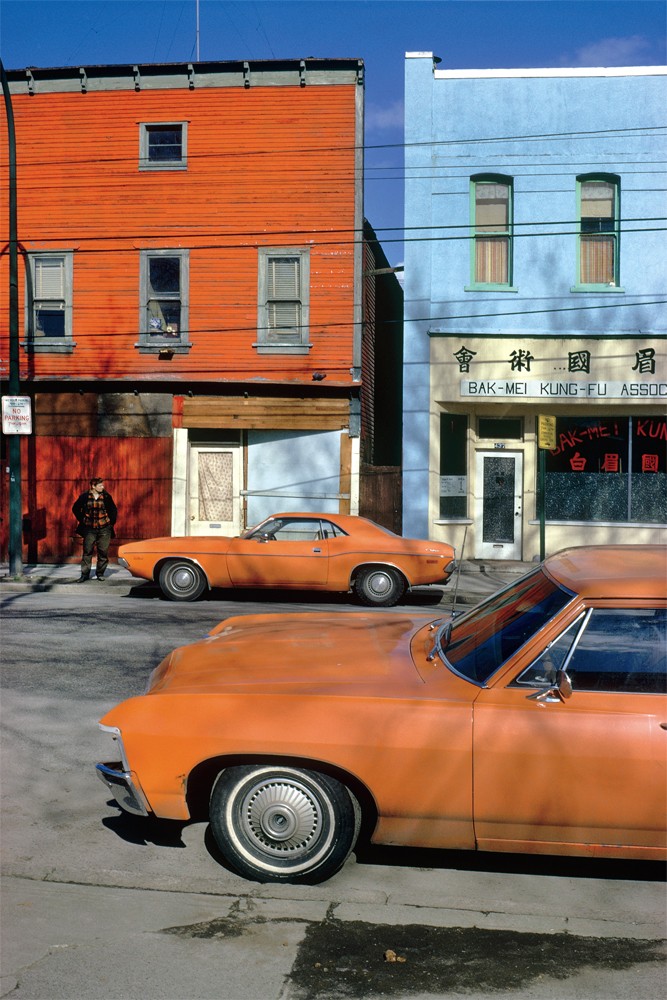Colour His World: The Photography of Fred Herzog

Orange Cars Powell, 1973, ink jet print, 30 x 20”. Courtesy of Equinox Gallery, Vancouver.
Discussions of colour photography and its earned and appropriate consideration as a serious art form were taking place in the US in the mid-’70s. No longer identified as only a commercial medium, it was challenging black-and-white film in the critical conversation about photography’s role in constructing meaning. In Canada, particularly in Vancouver, this conversation didn’t begin in earnest until the mid ’80s. But for photographer Fred Herzog, the discussion about content and meaning started with his colour work more than 30 years earlier. Born in Germany in 1930, he was a young man when he immigrated to Canada, arriving in Toronto in 1952 and moving to Vancouver the following year.
There is a solid assembly of noted photographers who work in colour, who could be Herzog’s colleagues in subject and, even, to some extent in style. All are Americans. Helen Levitt chose the street as a location for her work, and like Herzog’s, the neighbourhoods she selected were poorer ones, where the street was inhabited as an active social site. The colour work of Levitt that comes first to mind was done in the ’70s. Joel Meyerowitz was also engaged by the activity of the street and he too introduced colour into his work in the early ’70s. Stephen Shore set out on a road trip at the same time, documenting in colour what he saw as he travelled, influencing many photographers who followed with his significant book Uncommon Places, published in 1982. By then Fred Herzog had been working with colour for 30 years.
To read the full introduction and interview, order issue 119 - or click here to subscribe.

